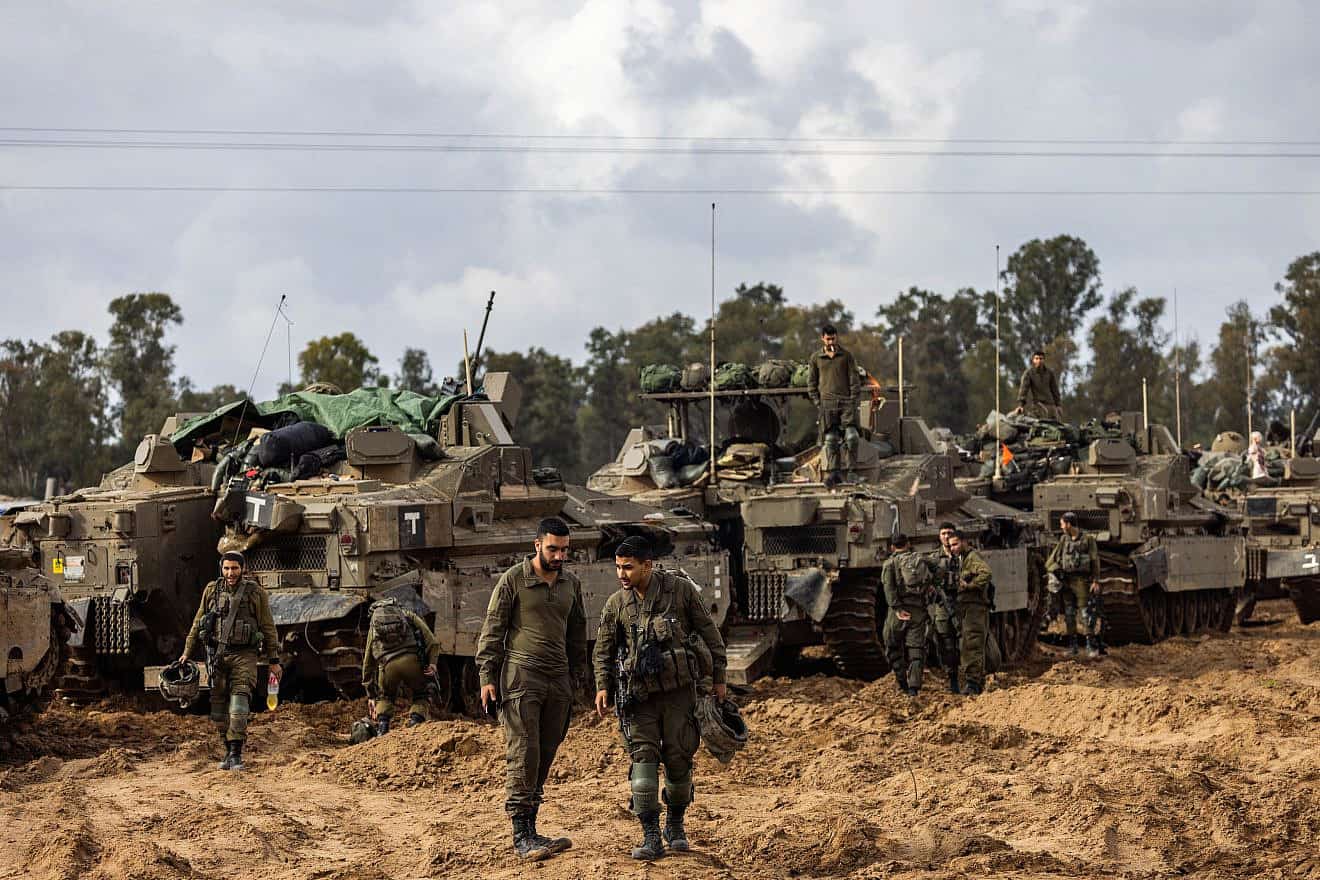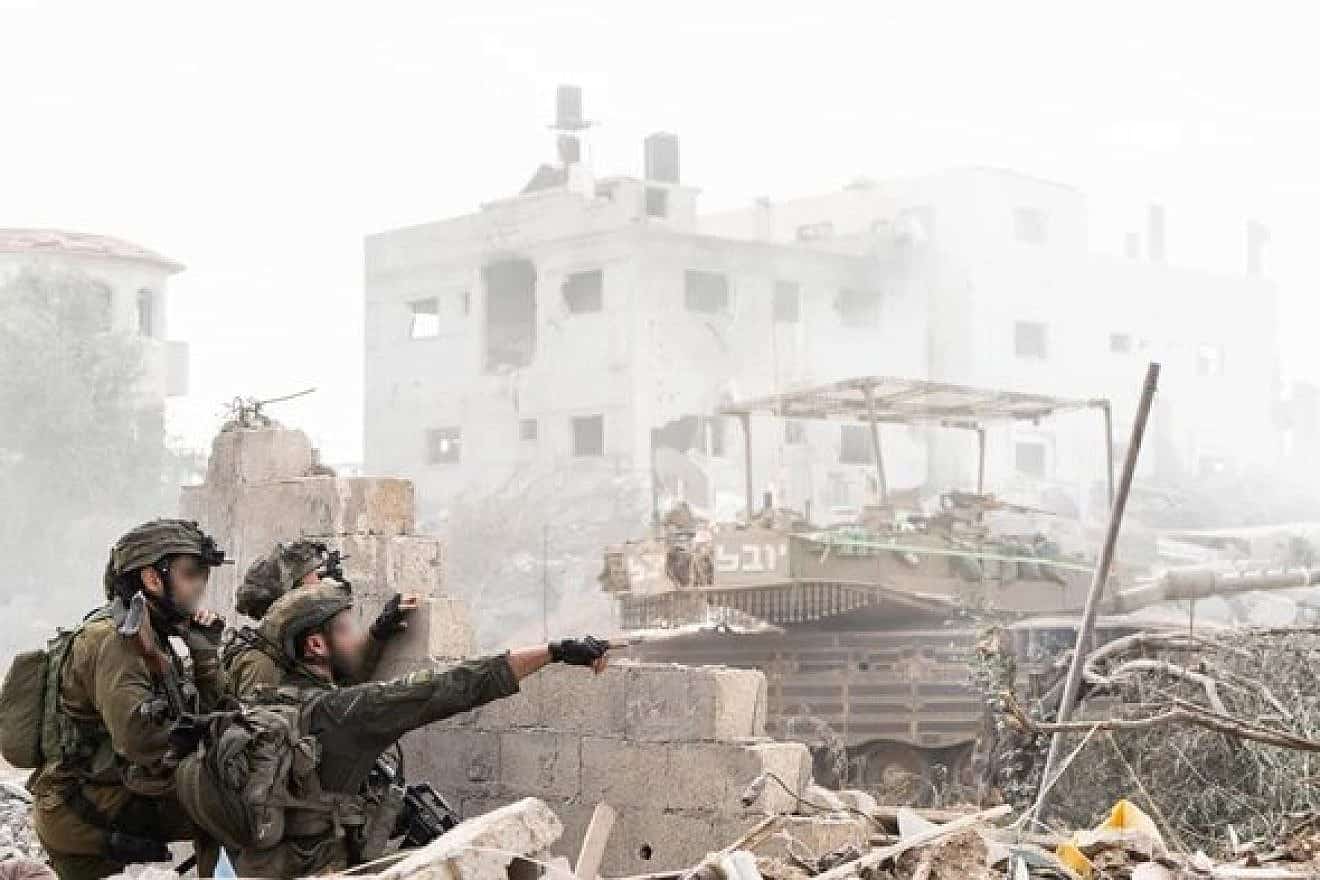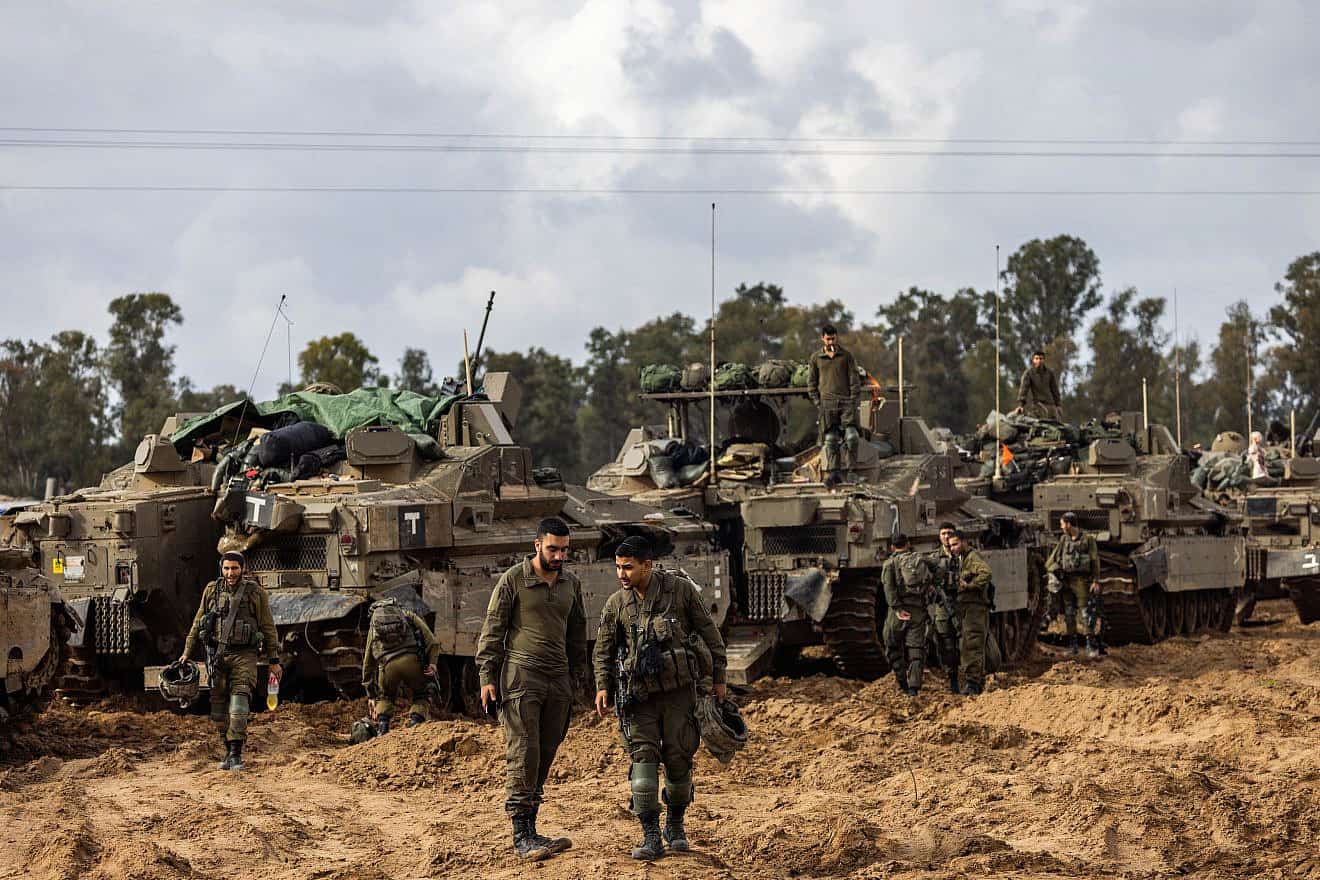The Israeli Cabinet hasn’t issued an official directive to the military to create a buffer zone in Gaza yet, but de facto, on the ground, one appears to be taking shape anyway.
Only the prime minister and his Cabinet ministers—not the Israel Defense Forces—could decide on an official policy to cut off a certain section of land from Gaza.
In practice, however, the battlefield is producing the foundation of what could easily turn into a buffer zone—an area that is clear of all structures and the presence of Palestinians, and which cannot be used by terrorists to approach the Israeli border for further mass murder attacks.
In basic security thinking, the space that separates a holding area—the area being defended—and the nearest enemy position is a security (buffer) zone, providing strategic depth.
The security zone is designed to create distance between the first line of defending military forces and the enemy, so that if hostiles approach, the military will have enough time to recognize this and respond before terrorists breach the Israeli border. The moment such a breach occurs, the military has failed in its mission to defend, and if terrorists can start their assault from the border, they cannot be stopped in time.
This type of prevention is exactly what was missing on Oct. 7, when terrorists began their attack from the borderline, saturating it through detonated holes in the security barrier as well as via powered gliders and beach landings.
To help prevent such a large-scale attack from ever occurring again, Israel will need to create sufficient depth that gives the IDF enough time to protect its holding zone—Israeli communities near the Gaza border—and to place its units within the security zone, on the Gazan side of the border.
Optimally, the post-war reality will see the IDF conducting patrols beyond the Israeli border and creating friction within the enemy territory to defend civilian areas behind the frontier.

Deny cover to death squads
For all of this to work, the security zone must be as free as possible from people and structures, and this will deny Hamas the cover to send death squads on cross-border raids.
While the depth of a future buffer zone remains unclear, a kilometer appears to be one realistic option for defending the border communities—a kilometer into Gaza in which Israel will have a complete picture of what is occurring overground and underground.
This would enable realistic defense of communities such as Kerem Shalom on the border with southern Gaza to Nahal Oz and Sderot, which are near the northern Strip.
Ultimately, the Cabinet will need to make a decision on declaring such a zone, and to decide on how it will look in practice.
Such a decision will affect Gazan agriculture and the ability of Gazans to rebuild in eastern neighborhoods of the Strip.

There is mass destruction in these areas, which Hamas used for launch points for the Oct. 7 slaughter, and which housed key Hamas bases over and underground.
The buffer zone could feature a deep canal to cut off underground terror threats, a concrete wall barrier, an additional fence with electronic sensors, and then a large border barrier – four separate obstacles.
Laying a minefield could also be an important feature of such a security zone.
Realistically, it is difficult to imagine any other way to defend the communities of the western Negev in the post-war reality.
The idea of retreating back to a border barrier, one that was so easily breached on that terrible day in October, combined with nearly 4,000 rocket attacks, makes the idea of a return to the status quo unthinkable.
Separately, the Gaza Strip could also remain split between north and south, with an IDF brigade operating on the dividing line.
The idea would be to reduce Hamas’s ability to return to the ruins of northern Gaza and Gaza City and rebuild its shattered terror army.
Disconnecting northern and southern Gaza would be expected to significantly reduce Hamas’s operational capabilities, keeping the terrorists locked into smaller areas.
It remains unclear whether post-war the IDF will have posts within Gaza from which it can set out on smaller security raids, as is the case in Judea and Samaria, or whether such raids will be launched from Israeli territory.


























